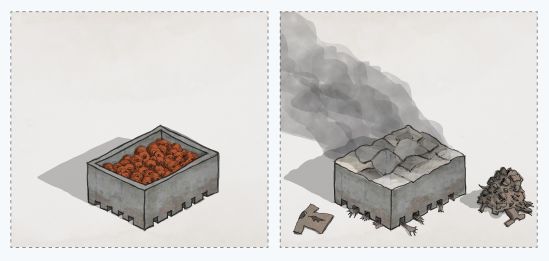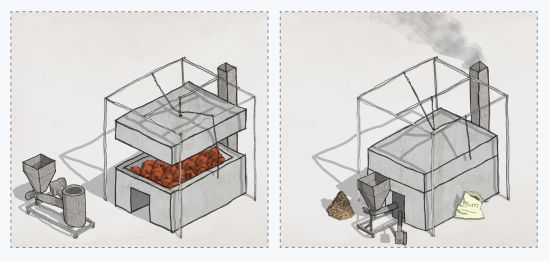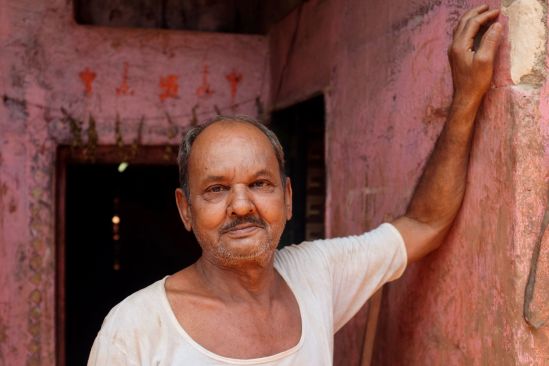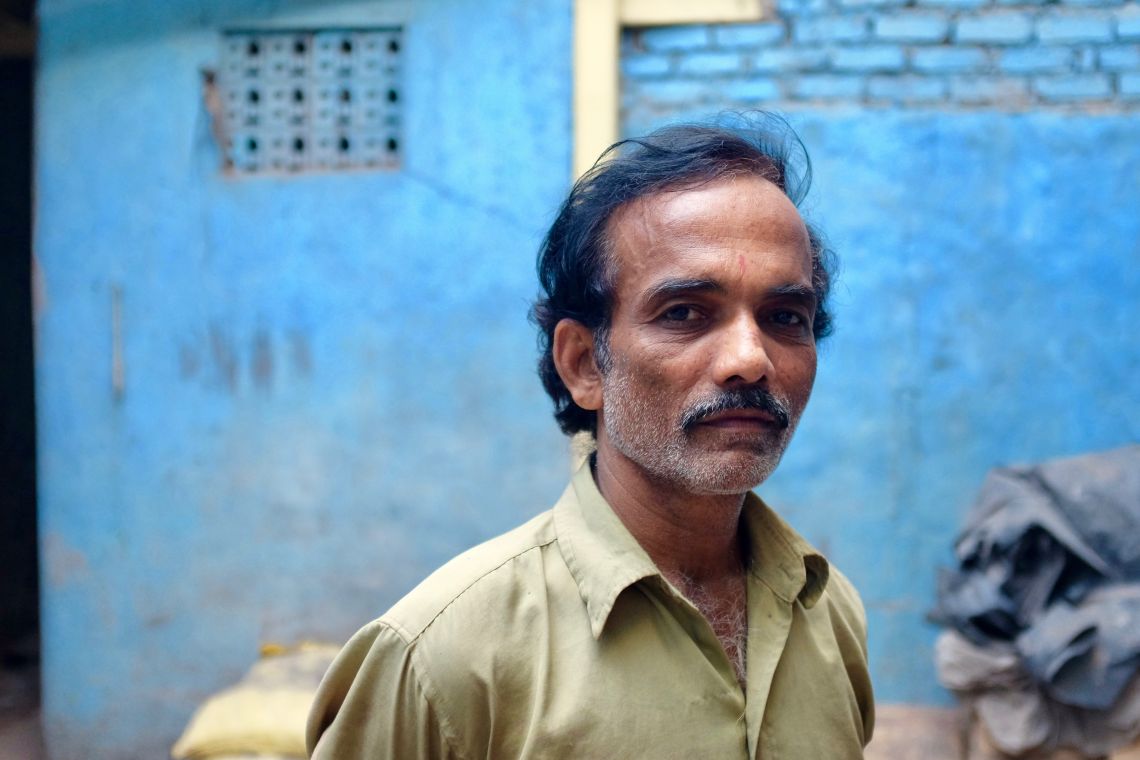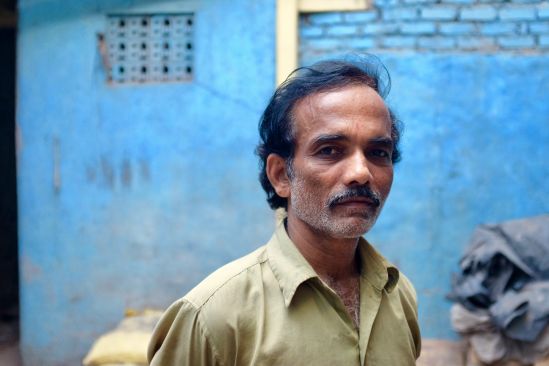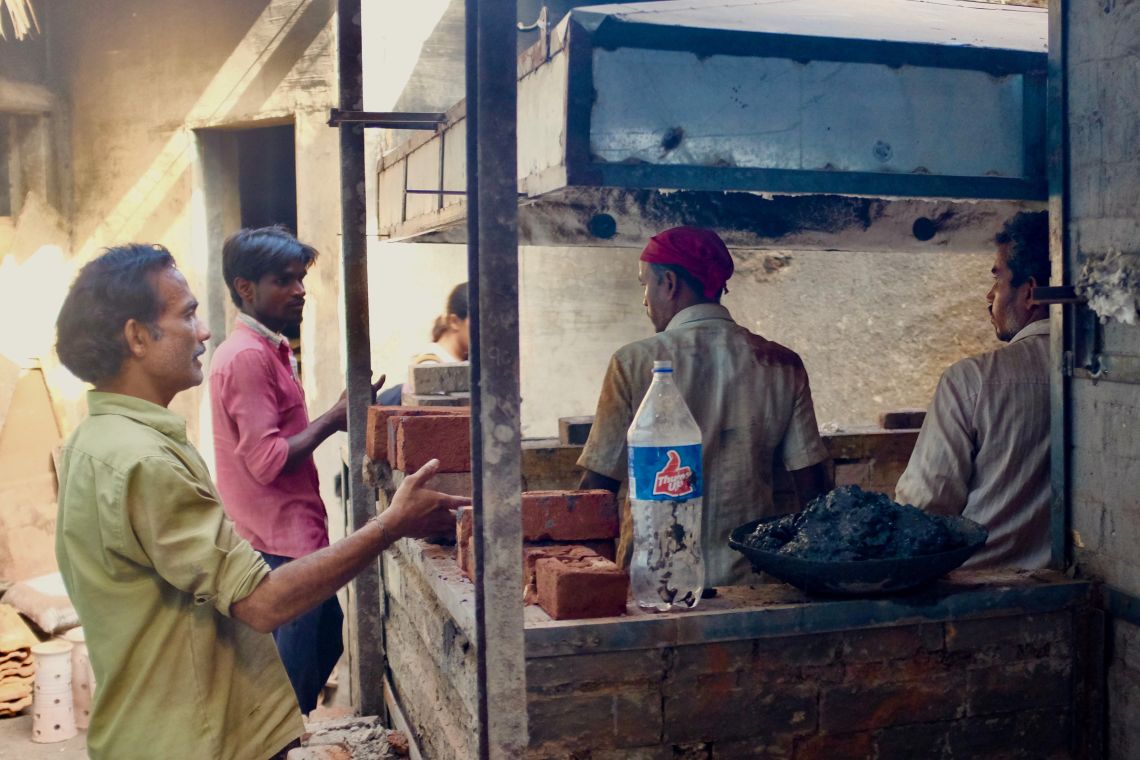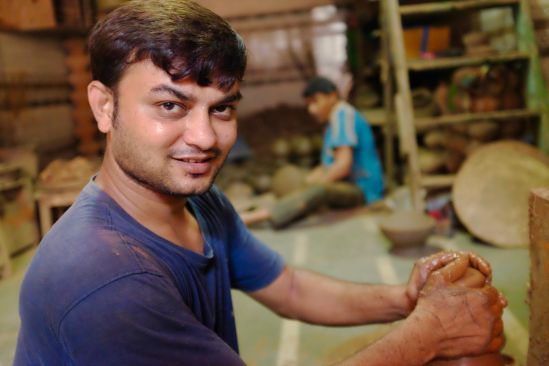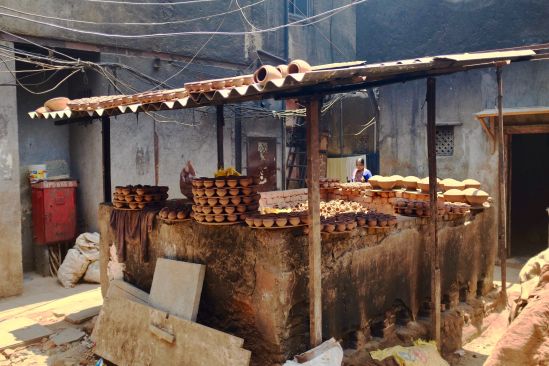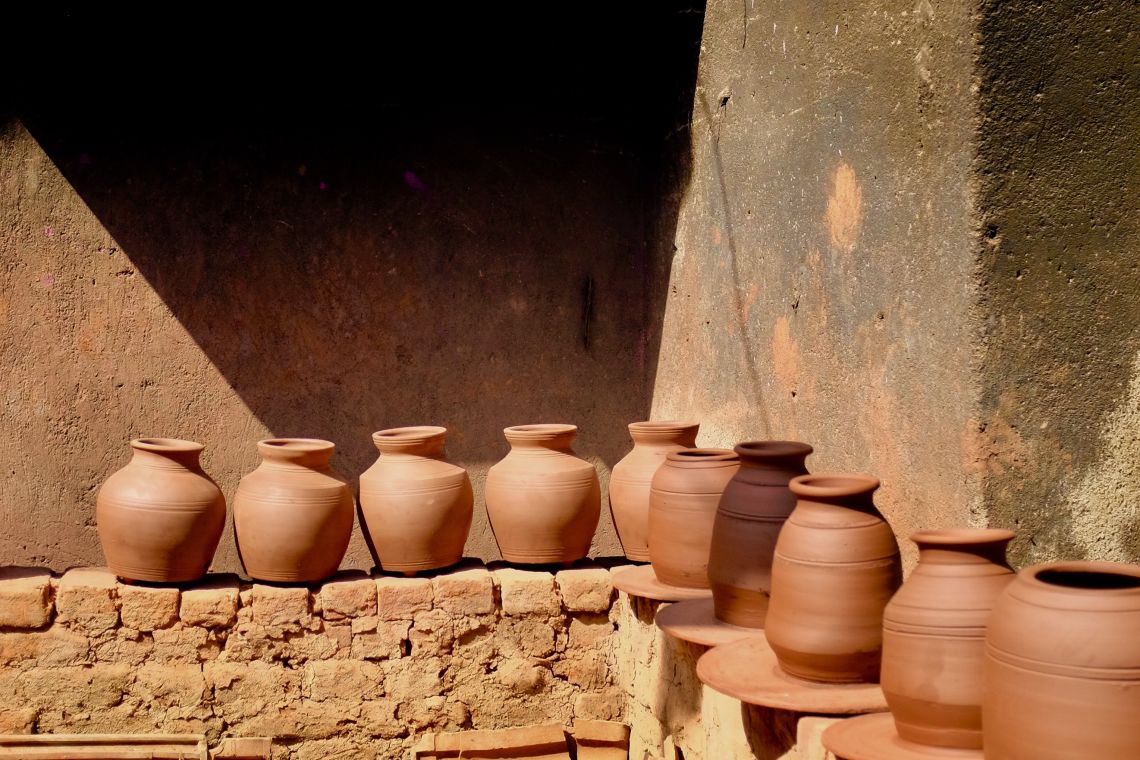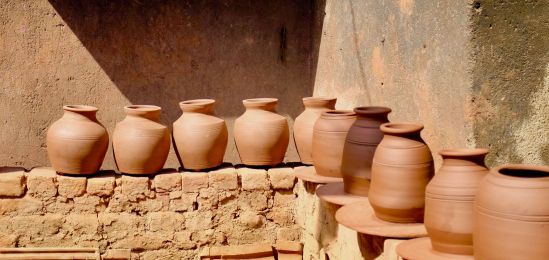Kumbharwada - incremental innovation to reduce pollution
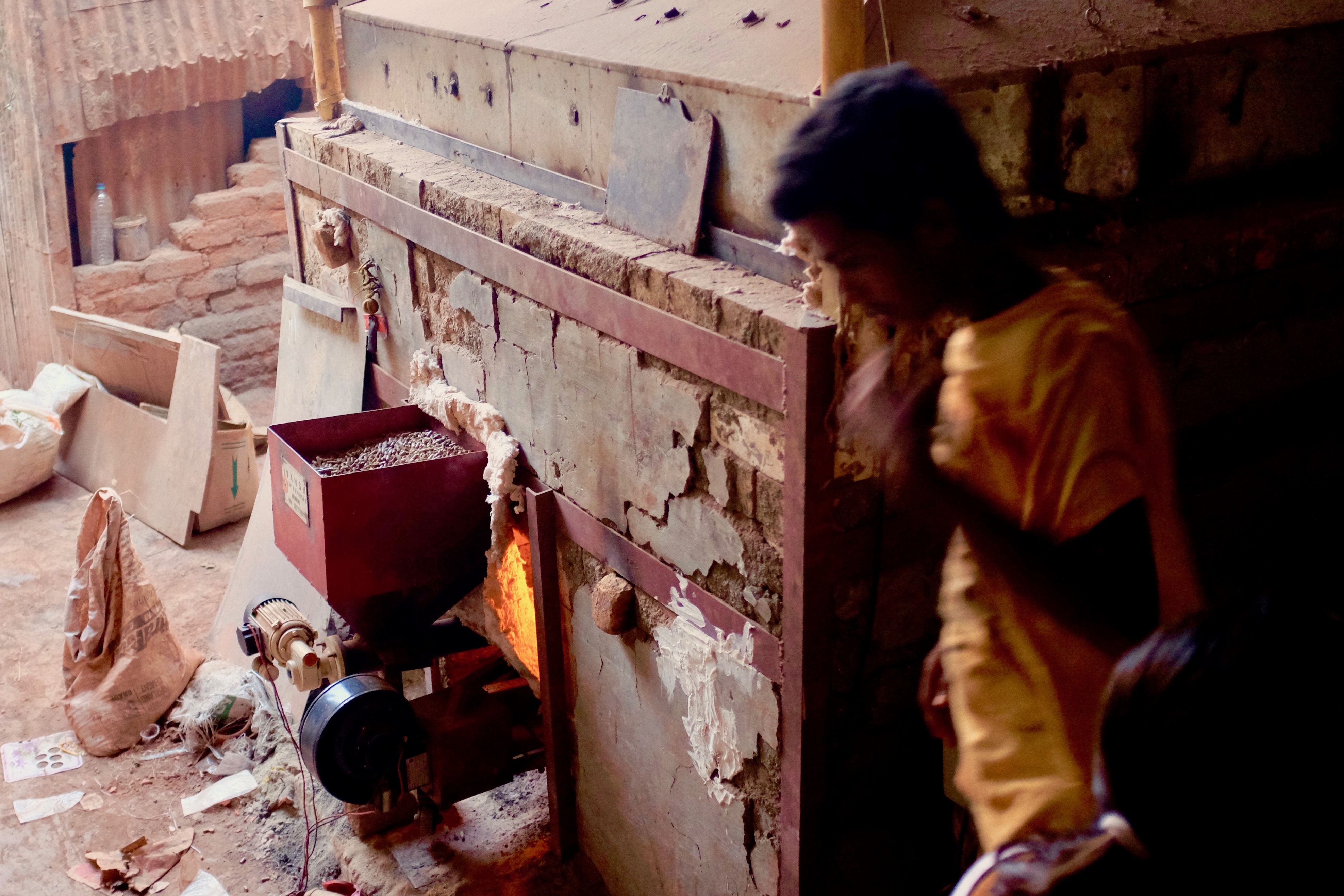
Kumbharwada - incremental innovation to reduce pollution
In Part 1 we discussed the history of Kumbharwada, the village in Dharavi known for its pottery production. This study focused on the hybrid use of space in Dharavi, which has led to potters living right up against their smoky kilns. Then, the question of how to deal with this pollution emerged… Does it make more sense to implement a large-scale policy or work at a grassroots level? We argued that Patrick Geddes’ Conservative Surgery offered a methodology for thinking about potential changes. It explains that one-size-fits-all engagements are unfeasible if we value the qualities of the area as it is. Instead, as called for by Geddes, upgrading should be incremental and collaborative, and most importantly should be implemented by local actors. But how?
During a week-long workshop, students from NYU Abu Dhabi were able to ask this question to potters in Kumbharwada, and for the last couple of months they’ve been thinking about how to respond to the discussions that took place. It became clear very quickly that innovation is abundant in Kumbharwada, and that this was a force to be harnessed in the pursuit of producing a healthier neighbourhood.
First, let’s talk about the infrastructure needed to make pots and how it’s done. Kumbharwada is always full of activity, dissipated through its narrow alleyways and lanes (called wadis). Everyone plays their role within a highly optimised network. The most important and influential actors are the business owners, usually potters, who live and work onsite. They own the kilns and run the workshops dotted around them. Teams of labourers assist these entrepreneurs to throw pots, and are charged with firing and finishing them.
The clay that's used in Kumbharwada is brought in from Saurashtra, the region of Southern Gujarat that the community originally hails from. The techniques that you see in Mumbai have been passed down through generations, and the use of Gujarati clay reflects this, connecting the pottery industry to its ancestral home. The clay is quarried in large chunks, which are then ground into a powder and put into 30kg sacks, and brought to Mumbai by lorry. Deliveries arrive two or three times a week, with each lorry carrying 20 tonnes of clay. The load is distributed amongst the potters, who usually order enough clay for one firing – around 33 sacks, which makes 160 medium sized pots. To prepare the clay, the powder has to be mixed with water.
The business owners are usually also the main potters, although often employ people to assist them. The vessels are made on a potter's wheel, and then polished and loaded into the kiln. A potter expects to spend around ₹50 (on materials and labour) on a medium sized pot, which they can then sell for ₹100. Once overheads like electricity and rent are factored in, they have a profit margin of ₹10/15 per pot. Potters usually take bulk orders, either by shops who sell them on in smaller quantities, or by businesses that use them directly. They're then sold for ₹150-175 per piece. With their overheads taken into account, wholesalers make around ₹20/25 profit per pot, around twice what a potter makes.
It’s clear that the process of making pots is always being tweaked to optimise it, and in recent months some Kumbharwada potters have been experimenting with a new technology that might help to drastically reduce smoke emissions. Out of the 120 odd kilns in the area, seven have been built to a new design.
A new kiln in action in Kumbharwada.
The traditional kiln consists of a brick box with an opening at the top, and a suspended floor made of tiles. When ready to fire, pots are stacked in the kiln, then covered in swabs of cotton, which hold in the heat. Fabric scraps are stuffed into the space under the suspended floor and lit. These scraps are offcuts from the local textile industry, and include composite fabrics with a high plastic content, which explains why the smoke is so pollutant. It seeps through the gaps between the cotton, which the potters peek through to check on their wares. The kilns are usually loaded in the evening and fired the next morning, before being unloaded in the afternoon.
Loading (L) and firing (R) the traditional model of kiln.
A new type of kiln has emerged in the last four months, with seven of them now built. For years, locals have been trying to think of ways to deal with the pottery industry’s smoke, perhaps aware of the story of Dharavi’s leather tanneries, which were forced to relocate after creating too much pollution. Around a year ago, a group of five potters discovered a furnace that burns biomass pellets, shared on YouTube. In this case, it was intended to heat ovens for baking pav buns, or oil to fry snacks. Biomass fuel creates very little smoke and so it appealed to the potters in Kumbharwada, who decided to build a kiln using this system. They adapted the pav oven, birthing a new eco-kiln. It looks quite similar to the traditional model, but it has a solid lid opened with a pulley. A furnace slots into a hole in the side of the structure and is fed with pellets from a hopper. A chimney sucks the little smoke that’s produced away from the public spaces at ground level. This kiln costs a total of around ₹2.5 lakh, compared to around ₹20,000 for a normal kiln.
Before rolling out the new kiln design across Kumbharwada, the five innovators wanted to test it. One of the group, Bharat, volunteered to build a prototype, and try it out for six months. His kiln was built with some money from the pottery community, and was first fired at the beginning of 2018. It seemed to work well, and the potters were chuffed to have found a solution to their smoke problem! In fact, people were so impressed that they ditched the six-month trial period and went straight ahead and built themselves new kilns. We spoke to some Kumbharwada potters to hear their views on this new technology, and to try to understand the web of innovation nurtured in the area.
Loading (L) and firing (R) the new type of kiln.
Govind Parmar
First of all, we met Govind and his nephew Umesh, who own a kiln near 90 feet road, in the first wadi. They were enticed to build a new kiln after seeing the success of Bharat’s one. The furnace was sourced through a contact in Dahisar, who also provided construction services for the oven. Overall, it cost them just over ₹2 lakh to build the kiln, which they were eager to use as quickly as possible, in order to recoup their costs. Unfortunately, as soon as the kiln was finished things started to go wrong. Govind told us that Bharat’s prototype kiln was only fired with 50 pots rather than a full load. It turns out that when fully packed, the pots in the kiln don’t bake evenly. The ones at the bottom don't fire well, which slows down the whole process. Govind told us that this was compounded by an increase in the price of pellets, meaning he was reluctant to fire the kiln for a long period, as it was becoming too expensive to do so. Originally, the pellets cost ₹7/kg, but they gradually went up in price to ₹11/kg.
Govind in front of his workshop.
Because the kiln was taking longer to fire, worked inconsistently, and cost them lots more in fuel, Umesh and Govind decided to convert it to the traditional model, only two months after first building it. This involved getting rid of the lid, cutting holes into the bottom, and installing a suspended floor for the fire underneath. Now, they’re back to using methods that they’re more familiar with, and their pots are looking great again. Unfortunately, however, their kiln still belches out its nasty smoke, despite their attempts to avoid it.
Govind and Umesh's kiln has been converted to the traditional model. Here it is being fired using fabric scraps.
Ranchod Tank
We met Ranchod back in March, when he had just finished building his new kiln. He seemed very excited about the prospect of reducing smoke emissions, and was passionate about collaboration within his community to tackle the issue. Unlike Govind and Umesh, Ranchod built his kiln in-house, employing local contractors to reverse engineer the other examples. His fancy new kiln has a number of features that you don’t see in Kumbharwada. It’s built out of bricks with a higher thermal mass, costing ₹28 compared to ₹5 for a normal brick; its chimney includes the option to close it off and block in the heat; and the brick wall that surrounds the furnace has been perforated for a more even heat distribution. Because the whole structure and furnace have been made locally, Ranchod has only spent ₹1 lakh on his kiln, as opposed to up to ₹2.5 lakh for products from outside Dharavi.
In Gujarat, where similar furnaces are used for other purposes, biomass pellets are subsidised by the government, whereas in Mumbai they aren’t. Like Govind and Umesh, Ranchod has spent a lot on his new kiln, and has been in a rush to sell pots in order to pay it off. The increasing price of biomass pellets has doubled the pressure, and recently he has encountered problems firing the pots properly. His homemade furnace has been troublesome, with the mechanism that feeds pellets into the fire-pit becoming jammed on multiple occasions, meaning the kiln can’t reach an optimum temperature. Like the others, Ranchod has also had issues making sure the pots were baked consistently.
Ranchod in the courtyard outside his home.
Recently, Ranchod decided that it was too stressful to continue using the new kiln – he desperately needed to recoup some of his costs. He decided to knock holes at the base of the kiln so it can be fired using the old technique. However, he insists that this is only a temporary measure. Although he is clearly stressed out about trying to make this new system work, Ranchod’s optimism hasn’t waned. He is passionate about trying to reduce pollution so that Kumbharwada can remain a hub for pottery in years to come. He’s planning on adjusting the flue on his furnace so that the heat is more evenly distributed in his kiln. He’s also working to stop the pellets from jamming, but can’t afford to stop business in the meantime. He’s had to take the step of damaging his new kiln (and spending more money to adjust it) in order to make sure that he can keep his business running.
Ranchod supervising the conversion of his kiln.
Ahswin Solanki
We also met Ashwin, another potter from a long line of Gujarati craftspeople. Unlike the other potters we spoke to, Ashwin was more sceptical about the new kilns, and has kept his traditional one in action. He seemed nonplussed about the pottery community’s latest innovations, explaining that they produce lower quality pots than the existing system. This is because the new kilns are fired at much lower temperatures, meaning that the pots they produce are far more brittle. Ashwin told us that he once sold a pot made in Bharat’s kiln, and the buyer came back the next day to complain that it had broken. On the whole, it seems that the new kiln is suitable for those who make ornamental pots, while more functional ones can only be fired using the existing system.
Ashwin sells his pots to a restaurant, which gets through 10,000 pots a week. They’re used because of their thermal mass – to keep things cool – for curd, buttermilk and water. This means they need to be waterproof, something that new kilns can’t ensure either. It’s clear, however, that Ashwin is searching for another solution to the pollution problem. He told us that he has been interested in bringing new ideas to Kumbharwada for years, and that he’s been following technological developments in Gujarat in order to do so. He showed us a YouTube video of a round kiln with a big chimney, used to fire larger quantities of pots back in his native state. He has concluded that it wouldn’t work in Mumbai due to the higher cost of wood or dung, the fuels used in Gujarat. He’s not yet ready to take the plunge into any new technology, and is waiting to see how things work out elsewhere.
Ashwin at work.
It’s clear that Kumbharwada is a hive of innovation and action, and its residents are rightly concerned with reducing the pollution produced by their industry. However, it seems that current innovations are still in their development phase, and are definitely not ready to be rolled out throughout the neighbourhood. In fact, in all of our visits to Kumbharwada, we’ve never seen Bharat – the new kiln’s pioneer – fire his kiln. It seems like he might have stopped using it altogether (we were told he wouldn’t be able to dismantle it because it was built with a contribution from the local community).
So, thinking of the lessons of Patrick Geddes, how can the area’s innovation be harnessed so that these new kilns can be optimised? In the four months since new kilns have arrived in Kumbharwada, it seems like many steps have been taken towards ensuring they fire properly – people are experimenting with how to stack pots within them, how to better circulate the heat, and how to ensure they stay running for a long time. For example, Ranchod explained to us that he's planning on redirecting the flue in his furnace to point downwards (it currently faces up) so that the hot air can circulate more evenly within his kiln.
Ashwin's traditional kiln.
In order to boost the innovation that already exists in Kumbharwada, a number of small interventions could be made, contributing to this incremental development. First of all, biomass pellets should be made available at a subsidised rate, as happens in Gujarat. This means that there will be less pressure to fire the kilns as quickly as possible, allowing potters to be more patient, producing much better fired pots. On top of that, an investment might be made towards increasing the capacity of community banking and lending in the area – allowing potters to take out larger loans (with low interest rates) to cover construction costs, thereby relieving the pressure to recoup costs immediately.
Another way to take the pressure off a little bit would be to further optimise the traditional kiln design in order to reduce its emissions. This would give local entrepreneurs a little longer to resolve the issues with the new kilns, while being seen to take steps to reduce pollution. After our joint workshop at the beginning of March, students from NYU Abu Dhabi have been thinking about this, and spoke to Ashwin about designing a hood for his kiln. Since returning from India, they’ve produced a design for a chimney which redirects the smoke away from the ground. This could also include a filter to remove some toxic contents of the smoke. Part 3 of this series will talk about these developments as part of a wider culture of innovation and design, connected by local and global networks.
Recommended reading / references:
Dovey, K. (2013). Informalising Architecture: The Challenge of Informal Settlements. Architectural Design, 83(6), pp.82-89.
Dovey, K. and Tomlinson, R. (2012). Dharavi. [Melbourne]: Melbourne School of Design.
Engqvist, J. and Lantz, M. (2009). Dharavi - Documenting Informalities. New Delhi: Academic Foundation.
Geddes, P. and Lanchester, H. (1917). Town Planning in Jubbulpore. A report to the Municipal Committee by Professor Geddes and H. V. Lanchester, F.R.I.B.A., 1917.
Geddes, P. and Tyrwhitt, J. (1947). Patrick Geddes in India.
Goldsmith, S. and Elizabeth, L. (2010). What we see. Oakland, CA: New Village Press.
Haworth, R. (2000). Patrick Geddes' concept of conservative surgery. Architectural Heritage, 11(1), pp.37-42.
Srivastava, R. and Echanove, M. (2014). The Slum Outside: Elusive Dharavi. Moscow: Strelka Press.
Some pots waiting to be fired.



